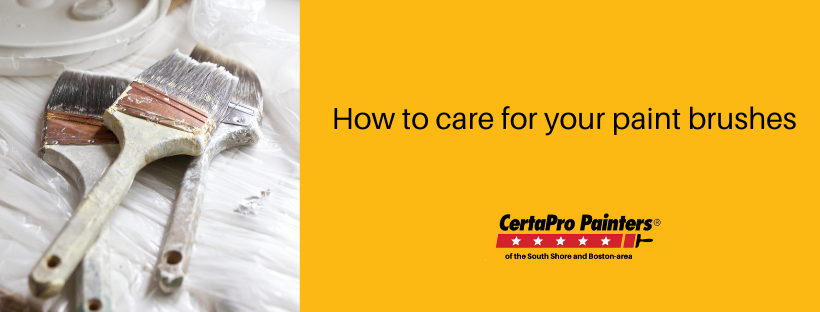
Painting
DIY House Painting School – How to wash your paint brushes
Posted on February 18, 2022
 Removing Water-Based (Acrylic/Latex) Paint from your Paintbrush:
Removing Water-Based (Acrylic/Latex) Paint from your Paintbrush:
- After you’re done, rinse your paintbrush under running water or swish it back and forth in a container of warm water to remove the excess paint.
- Continue rinsing the brush under water until the water runs clear.
- Use mild soap and water to wash the bristles thoroughly, massaging them to remove any remaining paint.
- For deep cleaning, use piping hot water and a few drops of dish soap, and soak the paint brushes in a bucket for a few hours.
- Be sure to dry the metal part of the paintbrush thoroughly.
- Finally, shape the brush’s bristles back into their initial shape – dry with a paper towel or soft cloth and let air dry.
Cleaning Oil-Based Paint off of a paintbrush:

Dirty rags with mineral spirits or paint thinner on them can spontaneously combust. Do not leave them in a pile where this is more likely to happen. For oil-based paints (i.e., oil paints, enamel), use paint thinner or mineral spirits to clean your brush.
- Use these solvents in a well-ventilated area.
- Pour a small amount of paint thinner or mineral spirits into a container/cup large enough to hold your brush.
- Swirl the brush in the solution, and make sure you get all bristles coated.
- Wipe the excess paint thinner off the brush onto a rag or paper towel – keep doing this until all the paint is off the brush.
- Shape bristles back to their original form and lay down the brush to let dry.
- Most Importantly: Rags with mineral spirits or paint thinner on them can combust. It’s important that they not be left in a pile where this is more likely to happen.
If you’re done painting for the day and will pick up painting again tomorrow:
- No need to clean your brush if you will be painting the next day
- Wrap your paintbrush tightly in plastic wrap
- Store the plastic-wrapped brush in a Zip-Top bag for extra air protection
- Do not wrap your brush in foil, as it is not airtight.
Storage of your clean paint brushes:
- Store clean, dry brushes upright or hanging to maintain their shape.
- We like to hang them with the bristles facing upward so they keep their shape.
Want more DIY Painting resources? – Try these:
- Fixing a hole in drywall – step-by-step instructions
- DIY instructions for painting an interior room
- DIY instructions for painting your kitchen cabinets





